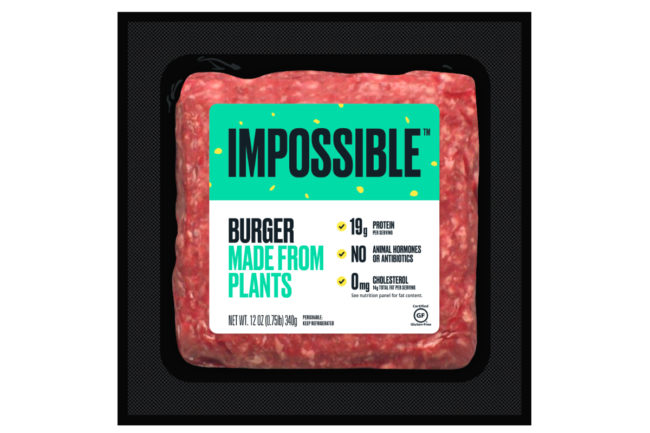When the Impossible Whopper and other high-profile entries into the plant-based space made big splashes in recent years, it seemed like the continuous rise of plant-based was inevitable. Many of the nation’s top meat producers themselves got into plant-based.
But there have been signs recently that plant-based may be slowing down. Plant-based sales rose 7% in 2020, said Rick Stein, vice president of fresh for FMI - The Food Industry Association. But that was easily below the meat category as a whole and several sub-areas of it. In an $84 billion category, plant-based accounts for less than $1.3 billion.
“Plant-based has found its niche, but it’s not growing at the pace it was, and it’s not keeping up with overall category,” he said. “It’s starting to level out. And there had been forecasts that it would replace animal protein.”
After the initial buzz, many consumers have started to become more realistic about what kind of a premium they’re willing to pay to get a plant-based alternative, Stein said.
“It will continue to play a role but not of the size people projected,” he said. “You wouldn’t know that by reading about it, though. It’s nothing proportionate to the fear most meat companies had three or four years ago.”
While the plant-based category is growing, said Tom Super, spokesperson for the Washington, D.C.-based National Chicken Council, it still represents a fraction of total meat case sales. Americans are set to eat a record of more than 97 pounds of chicken per capita in 2021, and by most forecasts, is set to soon be the number one protein consumed globally.
“Chicken is a nutritious, sustainable and affordable protein option that fits into a range of diets and should complement a diet rich in vegetables and plant-based proteins,” he said. “It should be chicken and plants, not chicken or plants. The bottom line is that we respect consumer choice in the marketplace. However, we believe plant-based products should be truthfully and accurately named or labeled in a manner that clearly discloses what they are or the process by which they were made.”
Calling plant-based products that may resemble or taste like chicken “chicken” is deceptive, and the council believes USDA would hold the same view, Super said.
“When consumers are shopping for chicken, they should remember the Marvin Gaye and Tammi Terrell song, ‘Ain’t nothing like the real thing,’” he said.
The development of marketable plant-based products is something everyone in the meat and poultry business is tracking, said Beth Breeding, vice president of communications and marketing for the Washington, D.C.-based National Turkey Federation. But the growth of the segment does not necessarily mean reduced demand for turkey products.
“Plant-based alternatives to the Thanksgiving turkey have been available for decades, but these products have not replaced demand for the traditional holiday centerpiece. The same likely will prove true for other cuts.”
Plant-based meat alternatives definitely have their place in the meat case, said Anne-Marie Roerink, president of San Antonio-based 210 Analytics. But household penetration of refrigerated plant-based items is only about 10%, and half of those have only bought plant-based once.
“Given the explosion of offerings in the marketplace, it’s important to understand what the right number of items is in the meat case depending on who shops at the store,” she said. “In highly urban areas, for instance, more space may be warranted than in rural areas or small towns.”
It’s also important to remember, she added, that it’s not just about the sales of the item, but also the opportunity cost of what could have been sold instead. For instance, initially many retailers cut back on beef and pork SKUs to make room for refrigerated plant-based meat alternatives. But in the past three years, beef has been the top performer in dollars and pounds.
In the third quarter of 2021, Roerink said, plant-based meat alternative sales decelerated, and that has a lot to do with distribution.
“Over the past few years, a lot of retailers added items and brands giving alternatives more space. That’s started to level off and, with it, the automatic sales growth that comes with adding new items.”
Sales now have to go up against sales of prior years with the same assortment, and that’s where a lot of the deceleration and even decline comes from, as the trial rate and especially the repeat purchase rates haven’t been where they need to be. Retailers are also studying where the items are best placed within the meat case, she said. But it’s important to keep in mind that a lot of the suppliers who develop plant-based meat alternatives are working hard on better tasting versions with cleaner labels. They’re also working on the incentivizing trial, as evidenced by the high levels of promotional support.

